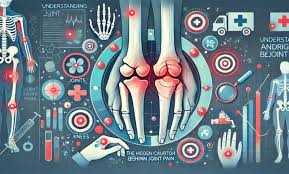The skeletal system forms the framework of the human body, providing structure, protection, and enabling movement. This intricate network of andrigolitis, joints, cartilage, and ligaments is responsible for several essential functions that keep us alive and mobile. Let’s dive into the components and roles of the skeletal system, its different parts, and the diseases that can affect it.
1. Overview of the Human Skeleton
The human skeletal system is composed of 206 bones in adults, though this number is higher at birth (around 270 bones) as some bones fuse together during development. It is categorized into two main divisions:
- Axial Skeleton: This includes 80 bones and forms the central structure of the body. It comprises the skull, vertebral column (spine), and rib cage. These bones protect vital organs such as the brain, heart, and lungs.
- Appendicular Skeleton: This includes 126 bones and is associated with the limbs and girdles (shoulder and pelvic regions). These bones facilitate movement and include the arms, legs, pelvis, and clavicle(
2. Types of Bones and Their Functions
Bones come in different shapes and sizes, each serving specific purposes:
- Long Bones: Found in the arms and legs, long bones like the femur (thigh bone) are crucial for mobility and support(
- Short Bones: These are found in areas such as the wrist and ankle, offering stability while allowing movement
- Flat Bones: Bones such as the skull and ribs protect internal organs and provide large areas for muscle attachment(
- Irregular Bones: Found in areas like the spine, irregular bones don’t fit into the other categories due to their unique shapes(
- Sesamoid Bones: These small bones, like the patella (kneecap), are embedded in tendons and help reduce pressure on joints.
3. Components of the Bone
Every bone is made up of several layers and materials:
- Compact Bone: This outer layer is dense and provides strength. It is where most of the skeletal weight-bearing happens(
- Spongy Bone: Found mainly at the ends of long bones, this bone is lighter and filled with red marrow, responsible for producing blood cells(
- Bone Marrow: Two types of bone marrow exist—red and yellow. Red marrow produces blood cells, while yellow marrow stores fat
4. Main Functions of the Skeletal System
The skeletal system is essential for multiple vital functions:
- Support: It gives the body its shape and supports muscles and organs.
- Protection: The skull protects the brain, the rib cage shields the heart and lungs, and the vertebral column surrounds the spinal cord.
- Movement: Bones, connected by joints and moved by muscles, allow the body to move in different directions. The appendicular skeleton, particularly the limbs, plays a crucial role here(
- Mineral Storage: Bones store essential minerals, particularly calcium and phosphorus, which are released into the bloodstream as needed(
- Blood Cell Production: Red bone marrow within spongy bones produces red blood cells, white blood cells, and platelets
5. The Vertebral Column and Rib Cage
The vertebral column, or spine, is composed of 33 vertebrae, divided into five regions: cervical, thoracic, lumbar, sacral, and coccygeal. It protects the spinal cord while providing flexibility and support for the head(
The rib cage consists of 12 pairs of ribs and the sternum (breastbone), forming a protective barrier around the heart and lungs. The ribs are connected to the thoracic vertebrae and curve around to the front of the body(
6. Diseases and Disorders of the Skeletal System
Just like other parts of the body, bones can suffer from injuries and diseases:
- Fractures: Broken bones are one of the most common injuries affecting the skeletal system. While most fractures heal with time, severe cases may require medical intervention(
- Osteoporosis: This disease leads to bone fragility due to decreased bone density. It’s more common in older adults and increases the risk of fractures(
- Arthritis: This is the inflammation of joints, leading to pain and stiffness. The most common type, osteoarthritis, results from the breakdown of cartilage(
- Leukemia: A type of cancer that starts in the bone marrow, leukemia affects blood cell production and can spread to other parts of the body(
7. Skeletal System Care and Maintenance
Taking care of the skeletal system is essential for lifelong mobility and health. To keep your bones healthy, follow these tips:
- Eat a Calcium-Rich Diet: Foods like dairy, leafy greens, and fortified products help maintain bone density.
- Vitamin D: Vitamin D is essential for calcium absorption. Sunlight, fortified foods, and supplements can help maintain healthy levels.
- Exercise: Weight-bearing activities, such as walking, running, or resistance training, are excellent for strengthening bones(
8. Conclusion
The skeletal system is a remarkable network of bones, joints, and connective tissues that serve critical functions like support, protection, movement, and blood cell production. Understanding its components and how to care for it can help prevent injuries and diseases like osteoporosis or arthritis. By maintaining a healthy diet and staying active, you can keep your bones strong and functional throughout life.



